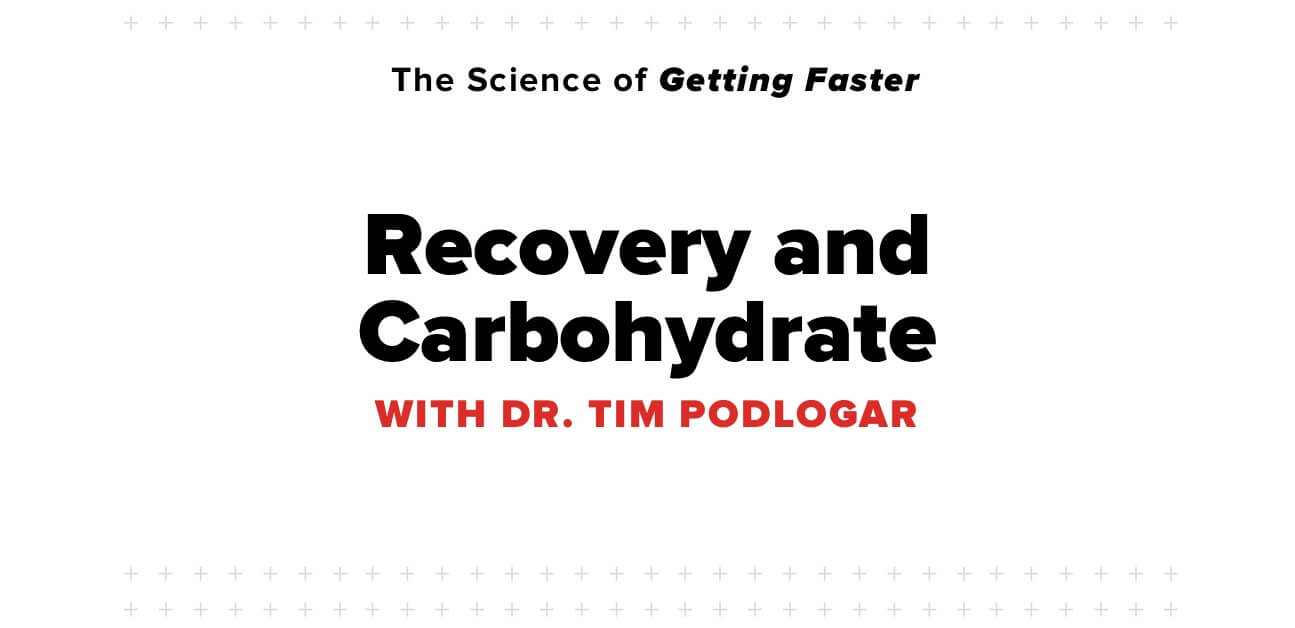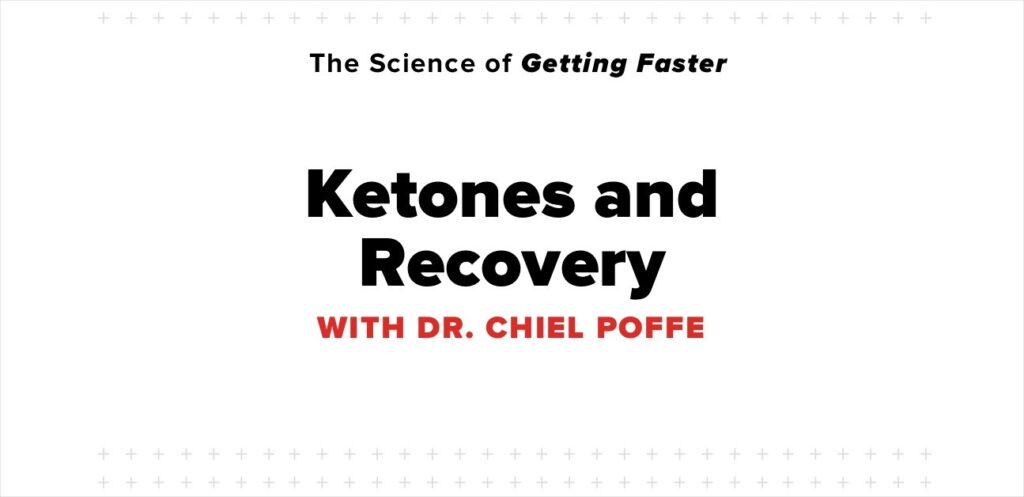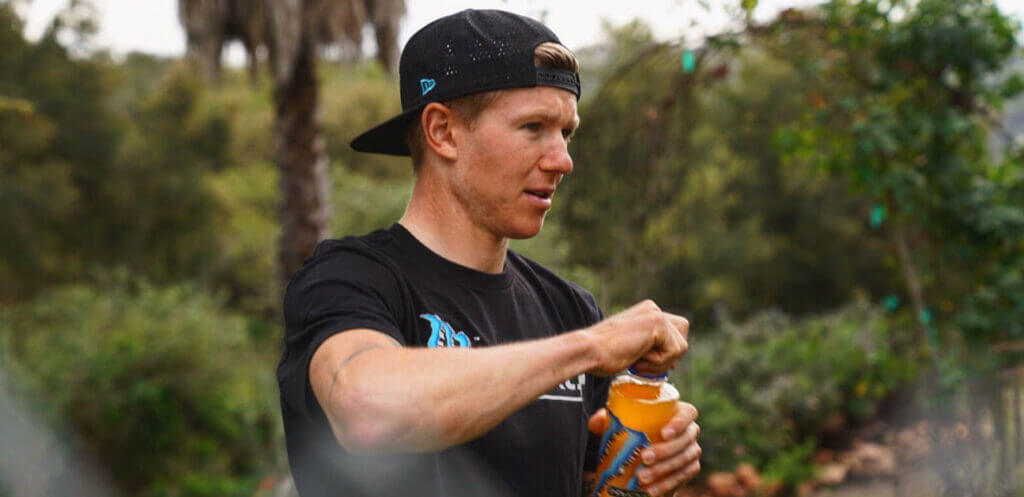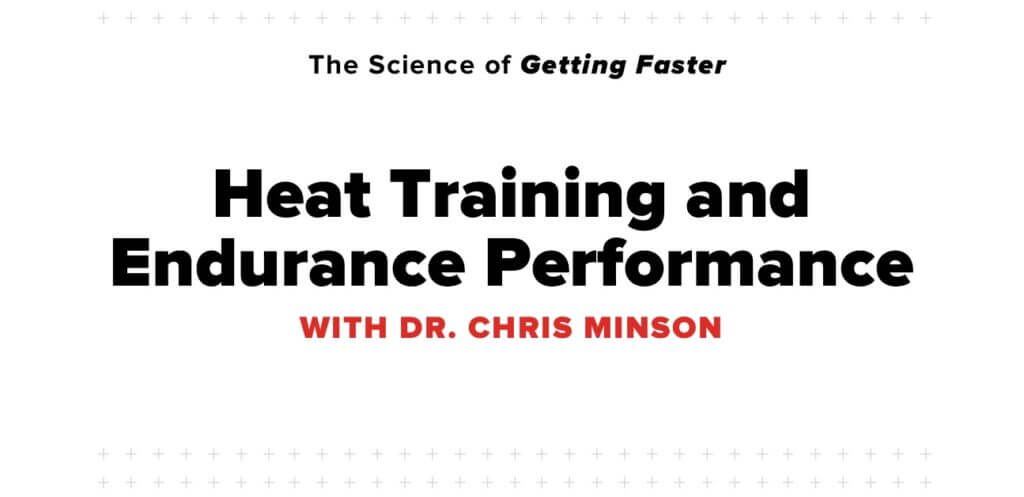Science of Getting Faster: Recovery and Carbohydrate Intake

We know that the quantity of carbohydrates ingested after exercise impacts the replenishment of glycogen stores, but what about the type of carbohydrates ingested? Does ingesting glucose and fructose, as opposed to just glucose, impact subsequent endurance performance? The Science of Getting Faster Podcast dives into the research with Dr. Tim Podlogar on the effects of co-ingesting fructose and glucose, to see if there are any performance benefits for cyclists.
For more information on recovery and carbohydrates, check out Science of Getting Faster Ep 2.
The Relationship Between Carbohydrates and Recovery
For athletes that complete multiple hard workouts in a day, replenishing glycogen stores in between training sessions is key to performance for the following session. The current research suggests that consuming between 1.0 – 1.2g of carbohydrates/ kg of total body weight/ hour is optimal for muscle glycogen replenishment in a short window of recovery. However, this research does not describe what specific monosaccharides should be ingested to optimize the replenishment of muscle glycogen.
Fructose, Glucose, and Galactose
Monosaccharides are simple sugars and are the basic components of a carbohydrate. Three common types of monosaccharides found in food include fructose, glucose, and galactose. According to Dr. Podlogar very little is currently known about galactose, which leaves fructose and glucose as the primary focus of this research.
Glucose can be utilized by most body cells. It is used in the muscle as a rapid source of energy and by the liver to maintain blood glucose levels. Glucose that is consumed but not used during exercise is stored in the form of glycogen in the muscles and the liver. Muscle and liver glycogen are converted back into glucose when needed. Fructose is a monosaccharide that cannot be utilized by most body cells. Instead, it must first be metabolized in the liver, where it is converted into liver glycogen. Fructose that is not converted to glycogen exits the liver in the form of glucose and lactate.
Adaptive Training
Get the right workout, every time with training that adapts to you.
Check Out TrainerRoadIngesting glucose helps replenish muscle and liver glycogen, while fructose primarily replenishes liver glycogen. Previous studies have found that the rate of muscle glycogen replenishment is the same whether you consume glucose or glucose combined with fructose. However, additional studies have found that ingesting both fructose and glucose results in a higher concentration of glycogen stores in the liver.
Which leads us to Dr. Podlogar’s main point of inquiry—if ingesting fructose and glucose results in increased glycogen in the liver, and increasing glycogen storage is the goal of recovering athletes, can it improve endurance performance?
Study on the Co-Ingestion of Fructose and Glucose
In 2020, Dr. Podlogar published his study Impact of Post-Exercise Fructose Maltodextrin Ingestion on Subsequent Endurance Performance. The aim of this study was to determine if ingesting fructose and glucose in between exhaustive bouts of exercise would result in an improvement in performance during the second session of exercise.
Design
Previous studies demonstrated that the ingestion of fructose and glucose in the recovery process enhances liver glycogen synthesis. For the subjects of these studies, the enhancement of liver glycogen synthesis resulted in an improvement in exercise capacity. Dr. Podlogar wanted to perform a similar test, but this time with the results being determined by exercise performance. Exercise capacity is determined by how long an athlete can maintain a set intensity and has been criticized for its external validity. Exercise performance in this case was determined by power.
In a preliminary test each subject completed a VO2 peak test to determine their watt-max (Wmax) power for the primary test. The participants were assessed with an incremental test to exhaustion. After an overnight fast, subjects started at 100 watts and the power ramped up 30 watts every two minutes until failure. With the test, Dr. Podlogar was able to determine maximum power (Wmax) at peak VO2.
Dr. Podlogar also wanted to work with cyclists instead of runners because cyclists tend to deal with less gastro-intestinal distress onset by the consumption of carbohydrates during exercise. There was a theory that in the first study the improvement in exercise capacity was because the combination of fructose and glucose led to less GI distress than glucose alone. Using cyclists was a way of lowering the potential for gastro-intestinal distress to affect the results.
Testing
The test began with a protocol to deplete the glycogen stores of the test subjects. For this to take place, each test subject completed a high-intensity interval workout in the morning. The workout consisted of two minutes at 90% of threshold followed by two minutes in Zone 2 repeated for as long as the subject could sustain. Once they could not go any longer at this rate they decreased to two minutes at 80% of Wmax followed by two minutes at Zone 2. They repeated this process once more until the athlete could no longer hold this regimen at 70%.
The depletion protocol was followed by four hours of recovery time, a steady state effort at 50% of Wmax, and a forty-minute time trial. In the time between the depletion and the steady state effort, athletes were given bottles with fructose and glucose (in the form of maltodextrin) or glucose (in the form of dextrose and maltodextrin) in even proportions, every half hour. The sugars in each bottle were based on the bodyweight of the subject and were either 1-1.5g of maltodextrin, with 1g of fructose or dextrose and maltodextrin. Blood samples were taken from each athlete during the recovery stage, during the steady state interval, and at the end of the time trial to determine the concentration of glucose and lactate in the blood.
The test was conducted in a “double-blind” format, meaning neither the subject nor the person giving the subject the drink knew its contents. This is to remove any psychological association with the contents of the drink. Test subjects were also not permitted any sort of cognitive distraction from any aspect of the test—there was no music, conversation, TV, or form of entertainment.
Results
When the study was finished, the results surprised the researchers involved—there was no difference in the time trial performance between the subjects who consumed only glucose and those who consumed fructose and glucose. However, there was a difference in the oxidation of carbohydrates during the steady state interval for those who took in the mix with fructose and glucose. Subjects who consumed fructose and glucose oxidized more carbohydrates within the first forty-five minutes of the steady state interval. By the end of the hour, this difference in oxidation levels was gone.
So while the athletes who ingested the fructose along with the glucose did not see an improvement in performance they did tend to utilize more carbohydrates. This demonstrated that there was an increase in the oxidation rates of carbohydrates at the front end of the second round of exhaustive exercise. Dr. Podlogar says that while there can be benefits to increased carbohydrate oxidation, there will ultimately need to be more research performed to determine if this combination leads to improvements in performance for subsequent exercise.
The Takeaway for Endurance Athletes
So what does this mean for endurance athletes? If you are doing two exhaustive efforts within a few hours of one another consuming both fructose and glucose during your recovery may be beneficial. A mix of fructose and maltodextrin doesn’t seem to have any downsides, it’s likely you will experience less GI distress, and there may even be a potential upside in performance.
With that said, Dr. Podlogar recommends that athletes stay mindful of their responses to different fuels and products. As he notes, every athlete is unique and may respond differently to different nutrition. Experiment with different options and always pay close attention to how your body is responding.
Researcher and Background
Dr. Podlogar received his master’s and Ph.D. at the University of Birmingham with a focus on exercise metabolism in sports nutrition. He currently resides in Slovenia working as a lecturer and working on research focused on hydrogenous ketones and hypoxia. You can follow him on Instagram @timpodlogar for more.


